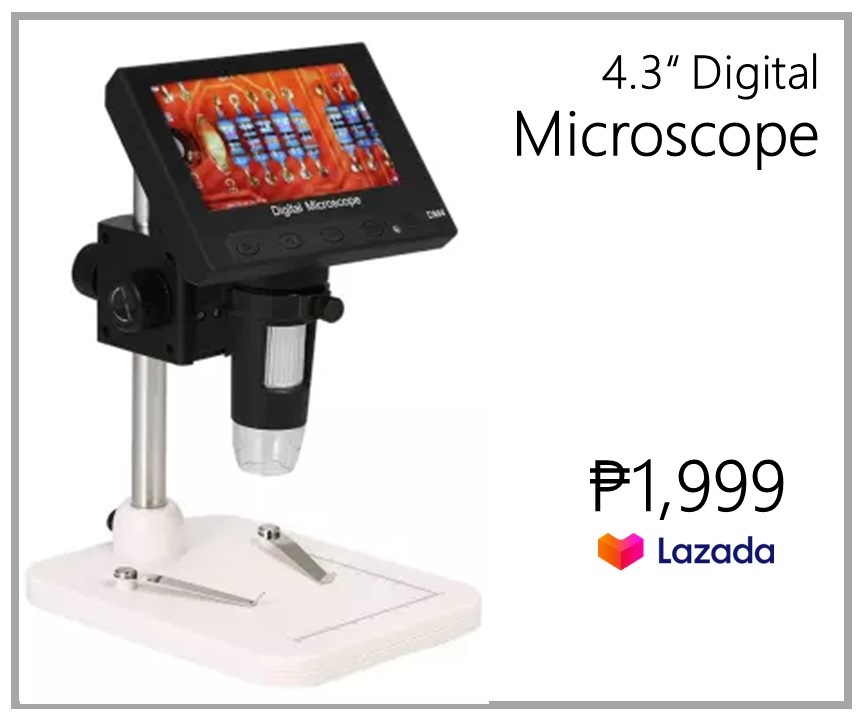Table of Contents
ToggleTired of the hassle that comes with shopping for shoes online in the Philippines? Say goodbye to confusion and hello to convenience with our Philippine Shoe Size Chart! This comprehensive guide is set to revolutionize the way Filipinos shop for footwear, providing a one-stop resource for all your sizing needs. Whether you’re looking to convert international sizes into local measurements or simply seeking accurate guidelines for measuring your feet, this chart is here to make sure you never have to second-guess your shoe size again.
The Importance of Philippine Shoe Size Chart
When it comes to buying shoes, getting the right fit is crucial for comfort and long-term foot health. The Philippine Shoe Size Chart is an essential tool that provides accurate measurements and conversions to help you find the perfect size. By understanding and utilizing this chart, you can ensure that your shoes will fit properly, reducing the risk of blisters, calluses, and other foot-related issues.
Moreover, the Philippine Shoe Size Chart also plays a significant role in online shopping. With many international brands available online, having a standardized shoe size chart allows Filipino consumers to confidently purchase footwear from around the world without worrying about incorrect sizing. This not only opens up more options for buyers but also promotes a seamless shopping experience that caters to diverse preferences and styles.

Using the Philippine Shoe Size Chart When Shopping Online
Shopping for shoes online can be confusing among Filipinos, especially when it comes to ensuring the right fit. With platforms like Lazada, Zalora, and Shopee gaining popularity in the Philippines, understanding the Philippine shoe size chart becomes essential. The convenience of online shopping is unparalleled, but getting the size wrong can lead to frustration and disappointment.
By utilizing the Philippine shoe size chart provided by these online retailers, shoppers can make informed decisions about their footwear purchases. This chart takes into account both length and width measurements, offering a more accurate representation of local sizing standards. Remember that different brands may have slight variations in sizing, so it’s always wise to refer back to the provided charts for each specific product. Embracing this simple tool can help eliminate guesswork and ensure a comfortable and stylish shoe-shopping experience online.

Philippine Shoe Size Chart and International Conversion to US, EU, UK, JP, AUS, KOR Explained
Understanding shoe sizes can be quite a puzzle, especially when it comes to the Philippine sizing system and its conversion to international standards. In the Philippines, shoe sizes are typically expressed in European sizes, with occasional references to US and UK measurements. This diverse mix reflects the country’s history of Western influence combined with its own unique sizing preferences.
When it comes to converting Philippine shoe sizes to international standards, it’s crucial to consult a comprehensive chart that covers US, EU, UK, and even Japanese sizes. This ensures accuracy when shopping for wedge, sandals, or chunky shoes online or from international brands that follow different size systems. By familiarizing yourself with these conversions, you can navigate the world of shoe shopping more confidently and avoid any sizing mishaps that could lead to discomfort or return hassles.
| PH | USA | UK | Canada | EU | AUS | Japan | Korea | INCHES | CM |
| 6 | 6 | 5.5 | 6 | 38 | 5.5 | 24 | 240 | 9 1/2 | 24.1 |
| 6.5 | 6.5 | 6 | 6.5 | 39 | 6 | 24.5 | 245 | 9 2/3 | 24.6 |
| 7 | 7 | 6.5 | 7 | 40 | 6.5 | 25 | 250 | 9 5/6 | 25.0 |
| 7.5 | 7.5 | 7 | 7.5 | 40.5 | 7 | 25.5 | 255 | 10 | 25.4 |
| 8 | 8 | 7.5 | 8 | 41.5 | 7.5 | 26 | 260 | 10 1/6 | 25.8 |
| 8.5 | 8.5 | 8 | 8.5 | 42 | 8 | 26.5 | 265 | 10 1/3 | 26.2 |
| 9 | 9 | 8.5 | 9 | 42.5 | 8.5 | 27 | 270 | 10 1/2 | 26.7 |
| 9.5 | 9.5 | 9 | 9.5 | 43.5 | 9 | 27.5 | 275 | 10 2/3 | 27.1 |
| 10 | 10 | 9.5 | 10 | 44 | 9.5 | 28 | 280 | 10 5/6 | 27.5 |
| 10.5 | 10.5 | 10 | 10.5 | 44.5 | 10 | 28.5 | 285 | 11 | 27.9 |
| 11 | 11 | 10.5 | 11 | 45 | 10.5 | 29 | 290 | 11 1/6 | 28.4 |
| 11.5 | 11.5 | 11 | 11.5 | 46 | 11 | 29.5 | 295 | 11 1/3 | 28.8 |
| 12 | 12 | 11.5 | 12 | 40.5 | 11.5 | 30 | 300 | 11 1/2 | 29.2 |
| 12.5 | 12.5 | 12 | 12.5 | 47 | 12 | 30.5 | 305 | 11 2/3 | 29.6 |
Philippine Shoe Size Chart Comparison with USA
When it comes to comparing shoe sizes in the Philippines and the USA, it’s important to understand the subtle differences that exist between the two sizing systems. While both countries use numerical measurements for shoe sizes, there is a slight variation in how these numbers correspond to actual foot measurements. For instance, a size 7 in the Philippines may not always perfectly match a size 7 in the US due to differences in manufacturing standards and fit preferences.
Moreover, Filipino shoe sizes often cater more towards Asian feet, which tend to be narrower on average compared to American feet. This could result in discrepancies when trying to find an exact conversion between Philippine and US shoe sizes. It’s essential for consumers to try on shoes before buying or refer to specific conversion charts that take into account these unique considerations for each market. By delving deeper into these nuances, shoppers can make more informed decisions when selecting their ideal footwear.

Philippine Shoe Size Chart Comparison with UK
When it comes to comparing Philippine shoe sizes with UK sizes, one may encounter some surprises due to differences in measurement systems and standards. While both countries use a numerical shoe sizing system, the actual sizing may vary significantly. This variation can cause confusion for anyone looking to purchase shoes online or in international stores.
The discrepancy in shoe sizes often leads to customers receiving ill-fitting footwear when not properly informed about the conversion between Philippine and UK shoe sizes. Understanding these differences is essential for a seamless shopping experience and ensuring comfort and style are not compromised by mismatched sizing. Overall, being mindful of the nuances between these two size charts can save buyers from unnecessary returns or disappointments when purchasing pump heel shoes across borders.

Philippine Shoe Size Chart Comparison with EU
When it comes to comparing Philippine shoe sizes with EU sizes, one must navigate through a fascinating blend of numerical nuances and cultural influences. The Philippine shoe size chart offers a unique perspective on foot measurements, reflecting the diverse population and varying preferences within the country. In contrast, the EU size system follows more standardized guidelines, emphasizing precision and consistency across different regions.
However, delving deeper into the comparison reveals intriguing correlations between Philippine and EU sizes that go beyond just numbers. Understanding these differences can provide valuable insights for both consumers and manufacturers alike, opening up possibilities for better-fit customization and cross-cultural footwear appreciation. Ultimately, this juxtaposition of two distinct size charts highlights the rich tapestry of global fashion and showcases how even measurements can tell compelling stories about identity and style.

Philippine Shoe Size Chart Comparison with Japan
When comparing Philippine shoe sizes with those of Japan, it becomes evident that there are significant differences in the sizing systems used in these two countries. The Philippine shoe size chart typically follows a system that is more aligned with US and UK measurements, whereas Japan utilizes a unique sizing system based on the length of the foot in centimeters. This disparity can lead to confusion for consumers looking to buy shoes from different markets, making it crucial to understand the conversion between these two sizing standards.
One interesting aspect of this comparison is how each country approaches half-size. In Japan, half sizes are not commonly available, leading to a narrower range of options for individuals looking for a precise fit. On the other hand, Philippine shoe sizes often include half sizes, providing customers with more flexibility when selecting footwear. By recognizing these nuances in sizing conventions between the Philippines and Japan, shoppers can make more informed decisions when purchasing shoes from either market.

Philippine Shoe Size Chart Comparison with Canada
When it comes to comparing shoe sizes between the Philippines and Canada, it’s interesting to note that both countries use different sizing systems. In the Philippines, shoe sizes are typically measured in European sizes, which can be converted to centimeters for a more precise fit. On the other hand, Canada follows the North American sizing system based on inches.
This difference in measurement standards can sometimes lead to confusion when trying to find the perfect fit, especially when shopping online or overseas. It’s crucial for buyers to always refer to an accurate conversion chart before making a purchase. Additionally, considering factors like width and foot shape is essential for ensuring comfort and proper support, regardless of which sizing system you follow.

Philippine Shoe Size Chart Comparison with South Korea
When it comes to comparing Philippine shoe sizes with those in South Korea, it’s essential to consider not only the numerical differences but also the overall fit and design preferences of each culture. While both countries use a similar sizing system based on millimeters, the styling and shape of shoes can vary significantly.
In the Philippines, there is often a preference for slightly larger and more relaxed fits, reflecting the country’s casual and laid-back lifestyle. On the other hand, South Korean shoe sizes tend to be more tailored and snug, emphasizing a sleeker and more sophisticated look. Understanding these cultural nuances can help ensure that you find the perfect pair that not only fits well but also aligns with your style sensibilities.
Ultimately, whether you’re browsing for a new pair of sneakers or looking for elegant formal shoes, being aware of these subtle differences in shoe sizing between the Philippines and South Korea can make your shopping experience smoother and more enjoyable. Pairing this knowledge with personal preferences will lead to finding footwear that seamlessly combines comfort, style, and cultural influences in every step you take.

Philippine Shoe Size Chart Comparison with Australia
When comparing Philippine shoe sizes to those in Australia, it’s important to consider both the numerical measurements and the actual fit of the shoes. While a size 8 in Australia may correspond to a size 6 in the Philippines numerically, the actual dimensions and width of the shoes may vary. This difference in size can often lead to confusion for shoppers looking to buy online or abroad.
One interesting aspect to note is that Australian shoe sizes typically follow a more standardized scale compared to the Philippines, where variations in sizing between different brands and manufacturers are more common. Therefore, it’s crucial for consumers to refer to specific brand size charts when making purchases across these two countries. Overall, understanding these distinctions can help ensure a more accurate and comfortable shoe shopping experience for individuals navigating between the Philippine and Australian footwear markets.

Philippine Shoe Size Chart and Measurements: How to Accurately Measure Foot Size
When it comes to determining the perfect shoe size, accuracy is key. In the Philippines, having a reliable shoe size chart and knowing how to measure your foot size accurately can make all the difference in finding comfortable and well-fitting footwear. One important tip is to measure your feet at the end of the day when they are slightly swollen, as this is when they are at their largest size.
To get precise measurements, stand on a piece of paper with your heel against a wall, then trace around your foot. Measure both feet and go with the larger measurement for better comfort. Keep in mind that different brands may also have slight variations in sizing, so it’s always best to refer to specific brand charts when buying shoes online or internationally. By understanding how to measure your foot accurately according to Philippine standards, you can ensure a more enjoyable and pain-free shopping experience for all your footwear needs.

Common Shoe Fitting Issues: Tips for Resolving Fitting Problems
One common shoe-fitting issue that many people face is dealing with uncomfortable pressure points. This can be caused by shoes that are too tight or stiff, leading to pain and blisters. To resolve this problem, try wearing thicker socks or using a shoe stretcher to loosen up the material in these areas.
Another fitting issue is dealing with wide feet in narrow shoes. If you constantly find yourself squeezing into shoes that are too narrow, consider looking for brands that offer wider widths or opting for styles with adjustable straps or laces. This simple adjustment can make a significant difference in your comfort level while wearing shoes throughout the day.

2024 Updated Philippine Shoe Size Chart: New recommendations and adjustments.
In 2024, the Philippine shoe size chart underwent significant updates to ensure a more accurate and comfortable fit for all consumers. With new recommendations and adjustments, this updated chart reflects the evolving foot sizes and shapes of Filipinos today. By incorporating the latest data on foot measurements and trends, the revised size chart aims to provide a seamless shopping experience for everyone in search of the perfect footwear.
One notable change in the 2024 shoe size chart is the inclusion of half sizes for a wider range of options. This adjustment acknowledges that not all feet are perfectly whole numbers and caters to individuals with unique sizing needs. Additionally, there is an emphasis on width variations within each shoe size category to accommodate diverse foot shapes and preferences. This shift towards more detailed categorizations showcases a commitment to inclusivity and comfort in every step you take.
As you navigate through your next shoe-shopping adventure with this updated Philippine shoe size chart, embrace the opportunity to discover improved fits tailored to your individual needs. Whether you’re searching for casual kicks or elegant heels, let this comprehensive guide empower you with clarity and confidence in selecting footwear that suits your style while prioritizing comfort above all else. Embrace these new recommendations as an invitation to step into a world where your shoes truly fit like they were made just for you.
Adult Men: Philippine Shoe Size Chart

Adult Women: Philippine Shoe Size Chart

Boys – Philippine Shoe Size Chart

Girls – Philippine Shoe Size Chart

Standard Shoe Size Measurement Systems Used Globally
The standard shoe size measurement systems used globally vary significantly, leading to confusion and frustration for many shoppers. While the US shoe sizing system is widely recognized, other regions, such as Europe and Asia, have their own unique sizing charts, which can make it challenging to find the perfect fit. Despite efforts to create a universal standard, discrepancies in sizing persist across countries, making online shoe shopping particularly tricky.
Additionally, foot shapes and sizes can vary greatly among individuals within the same region, further complicating the issue of finding accurately fitting footwear. Customizing shoes based on individual measurements may be a solution for those struggling with standard sizing charts. Embracing diversity in foot sizes and promoting more inclusive practices in the footwear industry could lead to better shopping experiences for all consumers around the world.
Common Misconceptions About Shoe Sizing in the Philippines
One common misconception about shoe sizing in the Philippines is the belief that Philippine sizes are the same as US or European sizes. However, each country has its own unique shoe sizing system, which can lead to confusion when trying to convert between them. It’s important for consumers to refer to a specific Philippine shoe size chart to ensure an accurate fit.
Another misconception is that all brands follow the same sizing standards. In reality, different shoe manufacturers may have slight variations in their sizing guidelines, leading to inconsistencies in how shoes fit across different brands. This highlights the importance of trying on shoes before purchasing them or referring to brand-specific sizing charts for accurate measurements.
Many people also assume that shoe size remains constant throughout adulthood, but factors such as weight gain, pregnancy, and hormonal changes can actually affect foot size over time. It’s crucial for individuals to regularly measure their feet and update their shoe sizes accordingly to ensure comfort and prevent potential foot problems caused by ill-fitting footwear.
Parting Thoughts: Ultimate Guide to Philippine Shoe Size Chart with Conversion & Measurements
In conclusion, understanding the Philippine shoe size chart and its conversion measurements is essential for ensuring a perfect fit when purchasing footwear. By following the detailed guide provided in this article, you can confidently navigate through different sizing systems and make informed decisions about the shoes you buy. Remember that accuracy is key when it comes to determining your exact shoe size, so taking precise measurements of your feet is crucial before selecting a size from the chart.
Moreover, keep in mind that shoe sizes may vary between brands and styles, so don’t hesitate to try on different sizes to find what suits you best. Embrace the diversity of footwear options available and celebrate the uniqueness of your feet by prioritizing comfort and fit above all else. With this ultimate Philippine shoe size chart as your trusted companion, you can shop with confidence and step into every occasion with style and ease.















